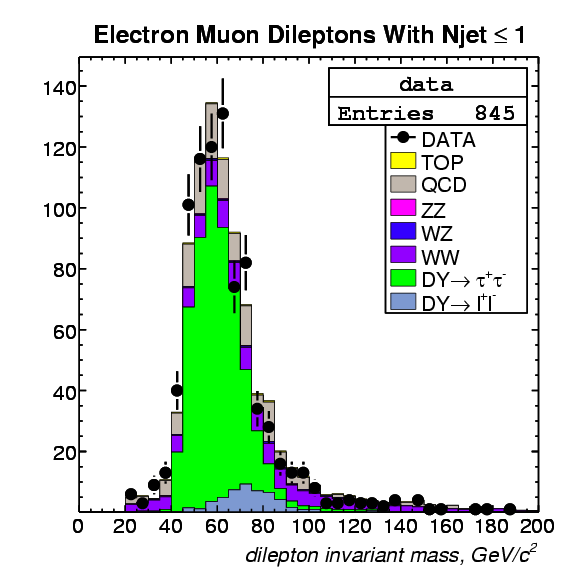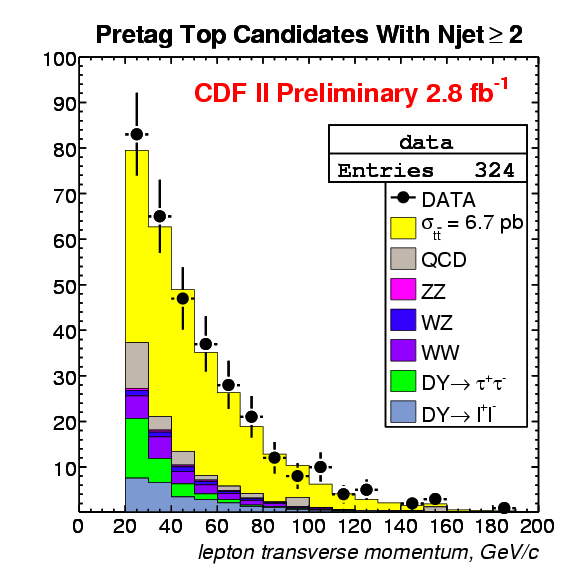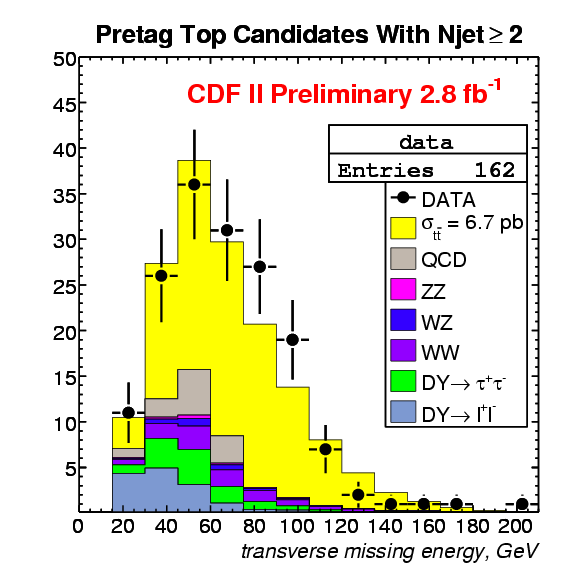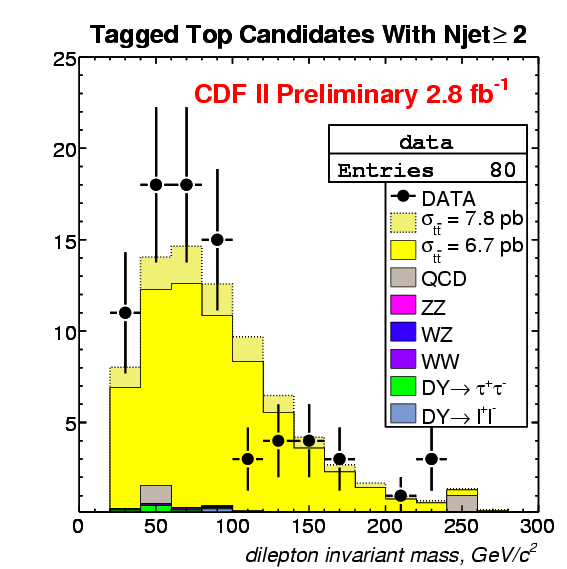

for candidate events
Njet ≥ 2 candidate sample
This analysis has been documented in public CDF note 9399 by Alexei Varganov and edited by Dan Amidei and Dave Gerdes
| σpre = 6.7 ± 0.8stat ± 0.4syst ± 0.4lumi pb. |
|---|
for candidate events before applying tight SecVtx tagging, and
| σtag = 7.8 ± 0.9stat ± 0.7syst ± 0.4lumi pb. |
|---|
for events containing at least one tight b-tag.
The samples used in this analysis were collected from high-PT central electron and muon data. The event selection requires a pair of oppositely charged isolated leptons passing ET ≥ 20 GeV kinematic cut. Each lepton is reconstructed electron or muon object from central or plug region. Selected jets must pass |η| < 2.5 geometric and ET ≥ 15 GeV kinematic cuts. Finally, events passing Drell-Yan veto should have MET ≥ 25 GeV and at least on jet must have ET ≥ 30 GeV
 | 
|
| Jet Multiplicity Spectrum for candidate events | Number of SecVtx tags in Njet ≥ 2 candidate sample |
Lepton selection validation is carried out using very pure high statistics sample of dielectron and dimuon events near Z pole. Measuring Drell-Yan cross section validates leptonic efficiencies and scale factors. In addition, checking electron-muon channel provides a thorough check for our physics model. In particular, we test the QCD and fakes background which is described using same charge dilepton events.
 | 
|
| Dilepton invariant mass spectrum for electron-muon events with Njet ≤ 1 | Transverse missing energy for electron-muon events with Njet ≤ 1 |

|
 | 
|
 | 
|
To get the signal sample composition we apply the tagging model to the high MET pretag background events with Njet ≥ 2. We count tags directly for top, ZZ, and fake sample and we use tagging matrix prediction for Drell-Yan, WW, and WZ events.

|
 | 
|
 | 
|
These measurements became public CDF result on July 24, 2008.